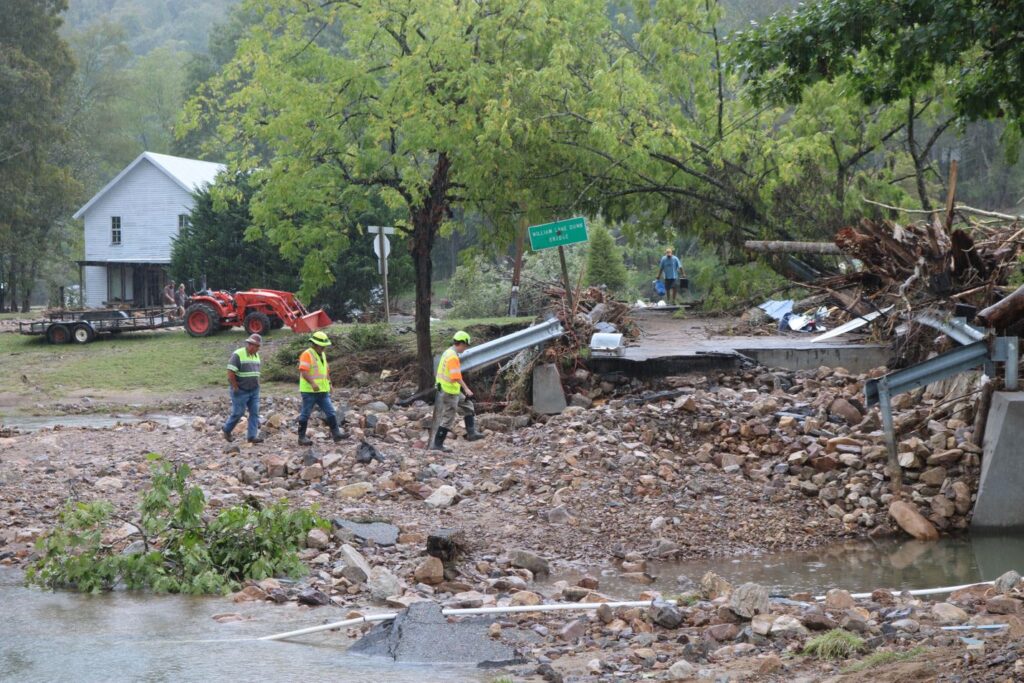
The Route 725 bridge in Taylors Valley over Laurel Creek damaged by Hurricane Helene. (Courtesy of Virginia Department of Transportation).
Virginia and federal officials are trying to contact Southwest Virginia residents impacted by Hurricane Helene and urging them to complete their applications for recovery funds dedicated to the region, Gov. Glenn Youngkin said in a press briefing Thursday afternoon.
The governor provided an update on the state’s continued recovery from the storm, which hit Virginia Sept. 27 and caused serious damage to Southwest Virginia, with the New River rising to 31 feet in one location and three people left dead. Youngkin also shared the state’s difficulty in getting in touch with storm survivors who need assistance.
“Oftentimes there is an interaction necessary, and that interaction sometimes is around the fact that there are elements that people have filed for that don’t qualify for individual assistance,” Youngkin said. “Sometimes we just need to speak with people and let them know that so that they can get their application correct.”

One example of a request that isn’t eligible for recovery funding is the cost of food in a refrigerator that was lost, Youngkin said. Insurance payments that exceed what the Federal Emergency Management Agency aid would cover also nixes federal assistance. Sometimes officials just need more information.
“If you’re getting a phone call from a 202 number, which is (the area code for) Northern Virginia, Washington D.C. area, and you keep hitting no, chances are it could be an inspector that’s trying to call you or an applicant service assistant that’s trying to help you get your registration complete,” said FEMA Federal Coordinating Officer Timothy Phiel. “If you get a letter, consider that an invitation to come back to our (disaster recovery center). Please come back and see us.”
The state has eight disaster recovery centers set up to help with the ongoing response to Helene, which also caused power outages for Appalachian Power customers that peaked at about 282,000 and roadways like Route 58 to be washed away.
About 10,000 applications for individual assistance have been filed with about $10.5 million paid out already, Youngkin said.
Thirty six localities have been approved for public assistance, which offsets the costs for emergency responses and cleanup, Youngkin said. Roanoke County is working to be added to that list. Some 93 applications for public assistance have been received, with 19 approved and $20 million already disbursed.
Over 270 farmers have been helped through Farm Recovery Centers, which were set up to help with what the Virginia Cooperative Extension said was over $159 million of damage to agricultural producers.
Personal debris will be removed from seven counties starting next week, Youngkin added. Claytor Lake remains a priority; so far, about 10% of the debris has been pulled out of it. The state has received $59 million for flood mitigation and hazard mitigation projects to “prevent future damage from future emergencies,” Youngkin said.
The aggregate damage from the storm is still to be totaled, Youngkin said. The figure will be shared with the White House and Congress next week to spur additional funding from the Small Business Administration, the Housing and Urban Development and the U.S. Department of Agriculture.

